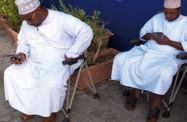Four telecoms operators currently have bids under consideration to become the third mobile network on the Omani market, following the Telecommunications Regulatory Authority’s (TRA) launch of the bidding process in November last year.

Shortlisted bids will be announced on August 14, with the winner set to be revealed on September 4. The TRA is currently considering applications from the UAE’s Etisalat, Saudi Arabia’s Saudi Telecoms Company, Kuwait’s Zain and, most recently, Sudan’s Sudatel.
The entrance of a new player should benefit customers by enhancing competition and providing a greater range of service options. However, an April 2017 report from market research company BMI emphasised the challenging commercial environment facing the new entrant, citing market saturation and price competition driven by mobile virtual network operators, which hold a 17% market share.
The profitability of telecoms operators is also being affected by the government’s decision to increase the royalty rate from 7% to 12% of gross annual revenues as of January 1, 2017. Operators Omantel and Ooredoo said that the new rate, had it been introduced a year earlier, would have reduced their revenues in the first nine months of 2016 by OR16m ($41.6m) and OR8.7m ($22.6m), respectively.
Furthermore, Omantel, which posted 2.1% revenue growth in 2016, saw its income decrease by 1% year-on-year in the first quarter of 2017 to OR132.6m ($344.4m), citing the increased rate as a contributing factor to the dip.
Reduction in GCC-wide roaming charges
Good news for mobile customers came in April, however, when roaming rates were lowered across the GCC. The new regulations were agreed upon by the Roaming Working Group, an entity comprising telecoms regulators from each GCC country, and means that travellers will benefit from a 35% reduction in rates for digital data, a 20% reduction in the cost of calls received and a 13% reduction in the cost of SMS rates.
Mobile network coverage in Oman is also becoming increasingly comprehensive, with the TRA announcing at the end of 2016 that it would bring coverage to 410 villages in underserved areas by the end of 2017 via the installation of 312 mobile base transceiver stations.
IT sector receives venture capital boost
The prospects of the sultanate’s IT sector, meanwhile, received a boost last October with the launch of the Oman Technology Fund (OTF), an equity-based venture capital fund with an initial backing of $200m.
The fund, which is majority-owned by the Oman Investment Fund (OIF), is aiming to act as a bridge between investors and entrepreneurs. Its CEO, Yousuf Al Harthi, said he envisages it as “a springboard or an accelerator that can take ideas to the next level”. Applications are currently open for the fund’s accelerator, which will launch in July.
The OTF has already taken its first steps towards fostering innovation in the sector by signing a memorandum of understanding in May with the Pakistan-Oman Investment Company. The agreement aims to encourage collaboration between the two countries in the development of new technologies.
The establishment of the OTF can also be viewed as part of a regional trend towards venture capital investment in IT, with Amazon’s $800m purchase of e-retailer Souq and the Saudi Arabian Public Investment Fund’s $3.5bn investment in Uber acting as indicators of the sector’s strong potential.
While the creation of OTF has been welcomed by stakeholders, there remain those who believe the government should be doing more to encourage the growth of sector.
“The government could support the development of the ICT sector while simultaneously improving the sector’s Omanisation rate by simply updating the kind of jobs it recognises. It is difficult to find and employ 3D animators, for example, if the government does not recognise this job title in the ICT sector,” Elias Tang Abdullah, managing director of ASM Technologies, a digital media technology and consultancy company based in Oman, told OBG.


